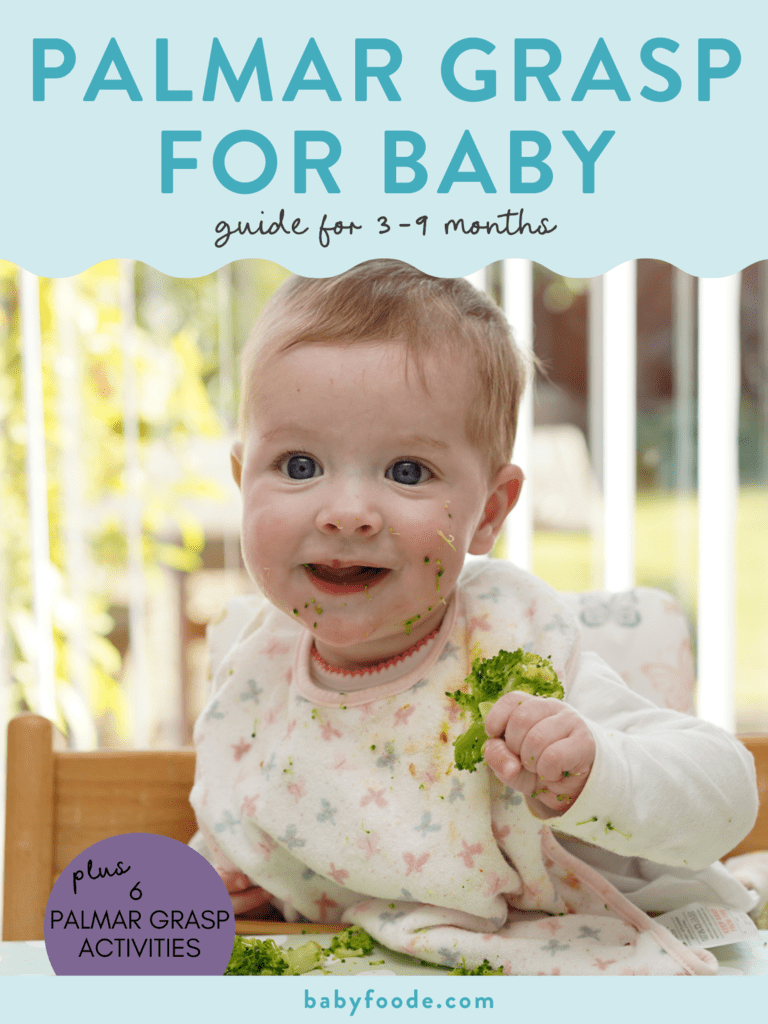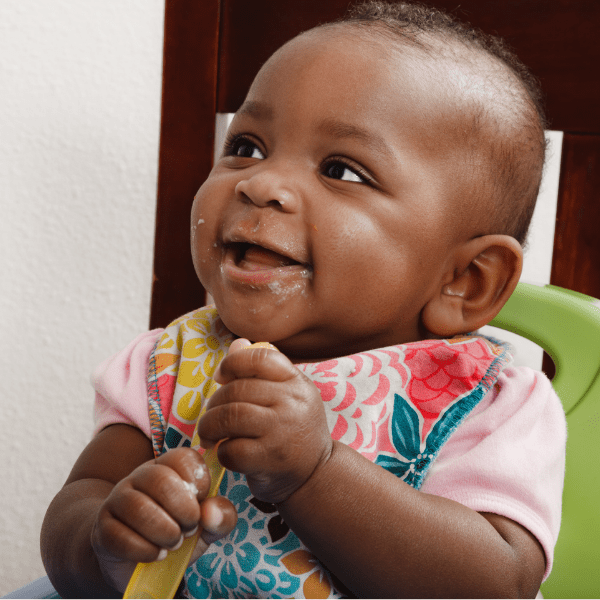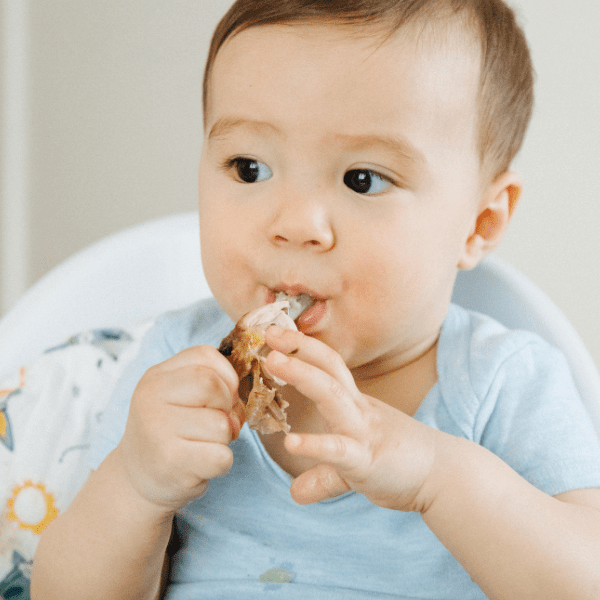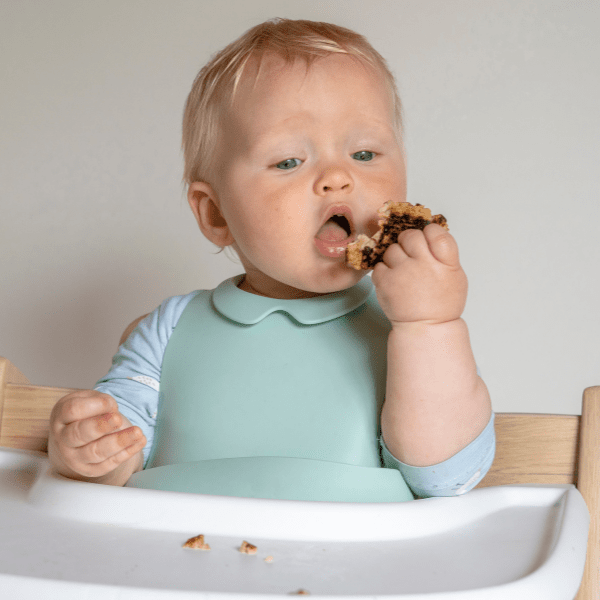Guide to Baby’s Palmar Grasp
Once your baby starts to develop a palmar grasp, the self-feeding journey has begun! In this guide, we’ll define the palmar grasp, why it’s important, explore different types of grasps, and provide recommendations for how to support its development. Great for 3-9 months.

Medically reviewed and co-written by Lauren Braaten, Pediatric Occupational Therapist (OT).
What is a Palmar Grasp
The palmar grasp is actually a primitive reflex – an involuntary movement pattern that we are all born with. When you apply pressure to an infant’s palm, the palmar grasp is activated when the infant closes their fingers around your finger. This grasp starts to fade around 3-6 months of age, once your baby starts to intentionally reach for toys and objects.
Frequently Asked Questions
The palmar grasp starts to develop around 5-6 months of age.
The palmar grasp sets the stage for developing and refining fine motor control needed to eat smaller pieces of food. With a palmar grasp, your baby is able to pick up larger stick-shaped or strips of food, as well as hold onto utensils.


Difference Between Palmar and Pincer Grasps
Baby will go through many developmental grasps on their way from a palmer to a pincer grasp. Keep in mind that the timelines for developing each may vary from one baby to the next. Here are a few of the types of grasps you will see.
Types of Grasps
PALMAR GRASP
Baby’s fingers are flexed with the thumb still within the hand. For babies learning to eat around 6 months of age, this is a developmentally appropriate grasp.
RADIAL PALMER GRASP
The Palmer Grasp starts to develop around 6-7 months of age. Baby starts to grasp an item more towards the thumb side of the palm and starts to use the thumb more.
RAKING GRASP
Baby starts to extend and flex the fingers to grasp an item and bring it into the palm which starts to develop around 7-8 months.
CRUDE PINCER GRASP
Starts to develop around 8-9 months. Baby starts to use the pads of the pointer finger and thumb to grasp a small object. This grasp is also often called an inferior pincer grasp.
SUPERIOR PINCER GRASP
The Superior Pincer Grasp is where your baby is able to use the tips of the index finger and thumb to pick up small items, which starts to develop around 10-12 months.

Why Baby Needs a Palmar Grasp to Eat Foods
Even though it is not a “refined” grasp, the palmar grasp is still important for learning to pick up and hold onto a variety of foods. There are lots of foods your baby can practice eating with a palmar grasp. Some food ideas include longer, stick-shaped foods such as cooked carrots or sweet potatoes, avocado or banana strips, hard-boiled eggs cut into quarters or strips, thin strips of toast with butter or a thin layer of nut butter, or thicker puree foods pre-loaded on a spoon, such as oatmeal, hummus or Greek yogurt.



Palmar Grasp Activities
- Provide lots of opportunities for tummy time – this builds strength in the core, arms and hands.
- Encourage baby to reach and grasp for hanging toys while laying on her back, such as this Fisher-Price Kick’n Play Piano Gym
- Help your baby bring his hands together and grasp his own hands
- See if baby can transfer a toy from one hand to the other – this is often easiest when baby is laying on their back, as head and trunk muscles are supported
- Practice grasping and releasing, by having baby hold onto a favorite blanket or stuffed animal and gently tug on it, or let your little one have their own Baby Tissue Box
- Give opportunities for a variety of sensory stimulation to the hands, through different textures, shapes, and sizes of teethers such as those that are bumpy, soft, wooden, squishy, etc.
